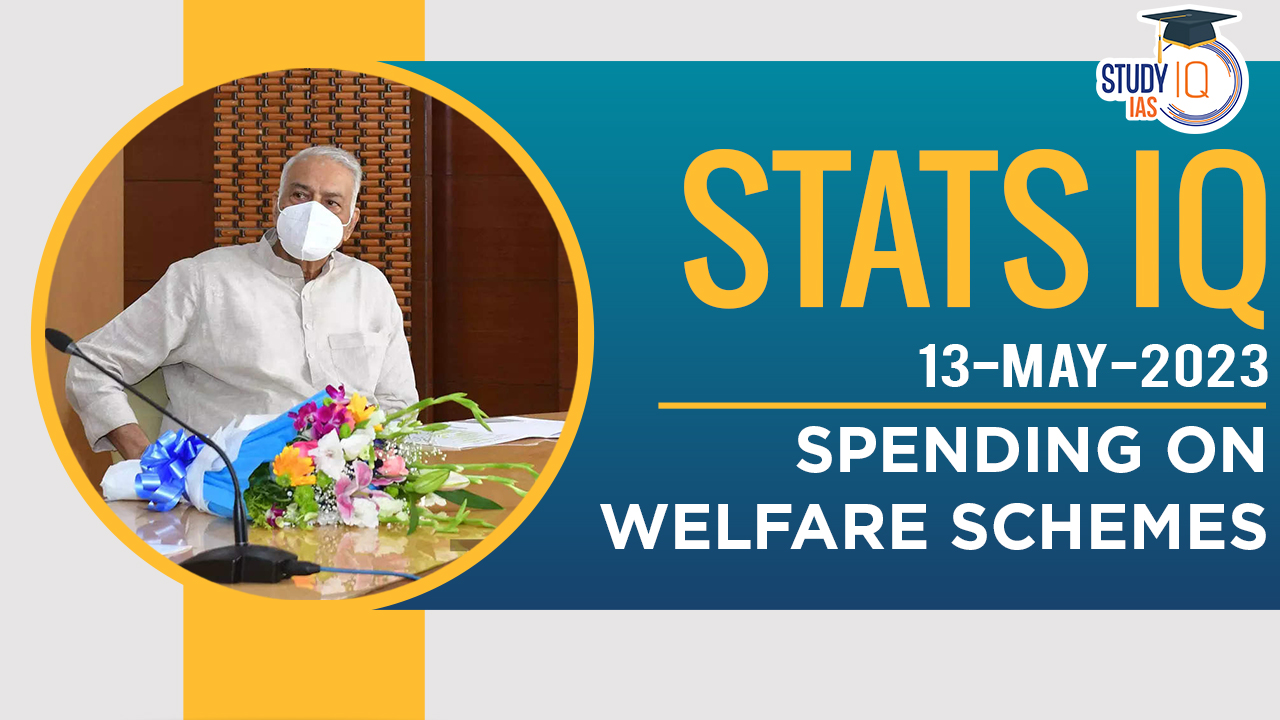Context: An analysis of the trend of welfare expenditure on key schemes shows a decline in central allocations for welfare schemes and sectors as a proportion of GDP since 2014.
| Decline of Funds in Nutrition Schemes |
- According to National Family Health Survey -5 data, the percentage of anaemic, underweight and stunted children in India is 67%, 32% and 36%, respectively.
- The fund allocation for POSHAN Abhiyaan has been reduced from 0.13% of GDP in 2014-15 to 0.07% in 2023-24.
- The budget allocation for mid-day meal scheme has decreased by 50% as a share of GDP, from 0.08% in 2014-15 to 0.04% in 2023-2024.
- To cover all women and births, the PM Matru Vandana Yojana scheme needs around Rs 14,000 crore, but the PMMVY Budget is yet to cross Rs 3,000 crore.
|
| Decline of Funds in Welfare Schemes |
- MGNREGA expenditure as a share of GDP went from 0.26% in 2014-15 to 0.20% in 2023-24.
- For NFSA (Food Subsidy), expenditure as a share of GDP went to 0.65% this year from 0.94% in 2014-15.
- As a share of GDP, central expenditure on school education (primary and secondary) has steadily declined from 0.37% in 2014-15 to 0.23% 2023-24.
|
| Decline of Funds in Social Security Schemes |
- According to the World Social Protection Report by the ILO, only 24.8% of Indians are covered by at least one social security scheme against the Asia-Pacific average of 44%.
- As a share of GDP, the allocations of National Social Assistance Programme declined from 0.06% in 2014-15 to 0.03% in 2023-24.
|
| Marginal Rise in Health Care Funds |
- The share of central health expenditure in GDP went up from 0.25% in 2014-15 to 0.30% this year.
- According to World’s Children report by UNICEF, India has the lowest vaccination rates in South Asia.
- India’s out-of-pocket expenditure on health remains much higher than the global average, pushing millions into poverty each year.
|
| Potential Solutions |
- Owing to rising malnutrition, India ranks 132 out of 191 countries in the Human Development Index (HDI) 2021.
- In such a scenario, it is difficult for India to be a superpower with an uneducated and unhealthy population.
- There needs to be reorientation of economic policies, with a sharper focus on drivers of wage growth.
- The government should increase the paltry pension amounts which have not increased since 2006.
|
Sharing is caring!


 SSC CGL Exam 2025 Apply Online Starts Ap...
SSC CGL Exam 2025 Apply Online Starts Ap...
 Daily Quiz 19 April 2025
Daily Quiz 19 April 2025
 Vehicle-to-Grid (V2G) Technology and its...
Vehicle-to-Grid (V2G) Technology and its...





















